LEARN MORTGAGE
What Is Home Equity?
Home equity is the value of a homeowner’s interest in their home. In other words, it is the real property’s current market value (less any liens that are attached to that property). The amount of equity in a house—or its value—fluctuates over time as more payments are made on the mortgage and market forces impact the current value of the property.
KEY TAKEAWAYS
Home equity is the value of the homeowner’s interest in their home.
An owner can leverage their home equity in the form of collateral to secure either a home equity loan, a traditional home equity line of credit (HELOC), or a fixed-rate HELOC.
A large down payment on a home (over 20%) will immediately provide a homeowner with more equity in their home than a smaller down payment.
How Home Equity Works
If a portion—or all—of a home, is purchased via a mortgage loan, the lending institution has an interest in the home until the loan obligation has been met. Home equity is the portion of a home’s current value that the owner actually possesses at any given time.
Equity in a house in initially acquired with the down payment you make during the initial purchase of the property. After that, more equity is achieved through your mortgage payments, since a contracted portion of that payment will be assigned to bring down the outstanding principal you still owe on the loan. You can also benefit from property value appreciation because it will cause your equity value to increase.
Home equity is an asset; it is considered a portion of an individual’s net worth, but it is not a liquid asset.
Special Considerations
Home Equity Loans
Unlike other investments, home equity cannot be quickly converted into cash. The equity calculation is based on a current market value appraisal of your property. But that appraisal is no guarantee that the property would sell at that price.
However, an owner can leverage their home equity as collateral to secure either a home equity loan or a home equity line of credit (HELOC), or fixed-rate HELOC, which is a kind of home equity loan and HELOC hybrid.
A home equity loan, sometimes referred to as a second mortgage, usually allows you to borrow a lump sum against your current home equity for a fixed rate over a fixed period of time. Many home equity loans are used to finance large expenditures, such as home repairs or college tuition.
A home equity line of credit (HELOC) is a revolving line of credit usually with an adjustable interest rate, which allows you to borrow up to a certain amount over a period of time. HELOCs work in a manner similar to credit cards, where you can continuously borrow up to an approved limit while paying off the balance.
Example of Home Equity
If a homeowner purchases a home for $100,000 with a 20% down payment (covering the remaining $80,000 with a mortgage), the owner has equity of $20,000 in the house. If the market value of the house remains constant over the next two years, and $5,000 of mortgage payments are applied to the principal, the owner would possess $25,000 in home equity at the end of the two year period.
Mortgage lending discrimination is illegal. If you think you’ve been discriminated against based on race, religion, sex, marital status, use of public assistance, national origin, disability, or age, there are steps you can take. One such step is to file a report to the Consumer Financial Protection Bureau or with the U.S. Department of Housing and Urban Development (HUD).
If the market value of the home had increased by $100,000 over those two years, and that same $5,000 from mortgage payments were applied to the principal, the owner would then have a home equity of $125,000.
